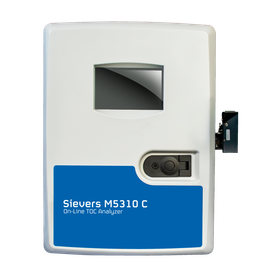Biodegradability testing device OxiTop
Easily screen the biodegradability of processed products!
Various industries are advancing the development of biodegradable materials as part of their efforts to address environmental issues. Research on biodegradable plastics is also included as one of the research and development projects under the Moonshot Research and Development Program led by the Cabinet Office (Goal 4). There are challenges with biodegradability testing... - Large testing equipment is required - Requesting external inspection agencies significantly increases costs and time - There is a limit to the number of samples that can be measured simultaneously For those who want to start with simple screening, OxiTop is recommended! - Cost-effective testing can be done in-house - Changes over time can be monitored even during measurement - Automatic recording of measurement values with data logger functionality - Up to 100 samples can be measured simultaneously - Can be conducted under OECD301F testing conditions
basic information
- Inexpensive screening of the biodegradability of prototypes - Compact design Multiple sets can be installed inside the incubator - Displays time-dependent changes during measurement Can be interrupted even if the test fails - Simultaneous measurement of up to 100 samples N=3 or more for each sample is desirable for accuracy management - Measurement period can be selected from 30 minutes to 180 days
Price range
Delivery Time
Model number/Brand name
OxiTop
Applications/Examples of results
Biodegradability tests of various chemical products (biodegradable plastics, fibers, resins, rubber, paints, adhesives, functional materials, cosmetics, microbeads)
Detailed information
-

What is a biodegradability test? Biodegradation is the process of breaking down organic matter into water and carbon dioxide with the help of microorganisms. A biodegradability test examines the extent to which organic matter decomposes under specific conditions. This test is gaining attention in many fields, including the development and improvement of new products.
-

**Familiar Plastics** In everyday life, plastic is a very familiar material, and due to its convenience, its production volume is high, with approximately 8 million tons flowing into the ocean globally each year, as announced by the Ministry of the Environment. Since July 2020, Japan has been promoting a transformation towards an environmentally conscious lifestyle, such as bringing reusable bags due to the introduction of paid plastic bags. However, there are estimates that by 2050, the weight of plastic waste in the ocean will exceed the weight of fish.
-

【Drifting and Stranding in the Marine Environment】 Due to factors such as wind, plastic that was on land can drift into rivers and the sea, or it may enter through wastewater treatment facilities that cannot completely remove it. Examples include tire particles worn down by asphalt and scrub materials found in facial cleansers. Plastic drifting in rivers and the sea gradually gets broken down by ultraviolet rays from the sun and tidal currents, and those that become smaller than 5 millimeters in diameter are referred to as microplastics. Microplastics are considered difficult to collect.
-

**Impact on Marine Life** Plastic waste also adversely affects organisms living in marine environments. Fishing lines and nets can become entangled around their bodies, and ingestion of plastic can lead to death. When small fish consume microplastics, and larger fish eat those small fish, a food chain is created, raising concerns about biological magnification. Additionally, there are still many unknowns regarding how not only plastic but also the chemicals added to plastic impact marine life.
-

【Impact on Humans】 It is possible that fish consumed by humans also incorporate plastic into their bodies. The effects of plastic and plastic-derived chemicals being absorbed into the human body, as well as their relationship to various diseases, remain largely unexplained, and research is ongoing.
-

**What is OxiTop: Measurement Principle & Examples of Measurement** The OxiTop system utilizes pressure sensors to measure the change in gas phase pressure (decompression) within a sealed container at a constant temperature. The carbon dioxide produced during the respiration of microorganisms breaking down organic matter is absorbed by the CO2 absorbent set in the measurement system, resulting in a decrease in pressure within the container. The calculation of the oxygen uptake rate (OUR) and the generation of carbon dioxide is based on the measurement of pressure drop. There are various delivery records in diverse fields such as polymer materials like resin, paints, films (Tsuchiya, Kousuke, et al., 2019), and detergents (Katam, Keerthi, et al., 2018).
catalog(4)
Download All CatalogsRecommended products
Distributors
Since our establishment in 1967, we have been dedicated to the development and dissemination of water quality measurement devices that anyone can use quickly, easily, and with high precision. In today's world, where the effective use of water, a limited resource, is required alongside environmental conservation, we aim to be a total solution provider that responds to all water environments by utilizing our water quality measurement devices, technology, and services. Furthermore, leveraging the latest technology and years of know-how, we are committed to delivering user-friendly and reliable water quality measurement devices more affordably, quickly, and widely.
























































